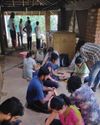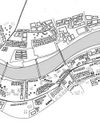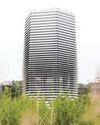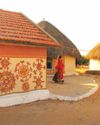Every morning Mariyam and her little brother Abdullah walk down the hill to fetch water before they go to school.

Life is hard on the Deh Mazang hill without water, electricity and open sewage. Her father and cousin had built the small house in 2003, a good year after the fall of the Taliban.
In the 1990-ies Afghanistan was ravaged by a civil war. Mariyam’s family escaped eastwards to Peshawar. With the promise of stability and good jobs, they decided to try their luck in post-conflict Kabul.
It is challenging to get accurate statistics given the lack of reliable census data in Afghanistan, but estimates of agencies like WHO, UN Habitat, use the following figures; in 2002 Kabul had roughly 800.000 inhabitants and a decade later it had reached around 4 million inhabitants. Some argue it is only 3,5 while others state it must be closer to a population of 5 million*. The base figures; from 8 to 40 lakh, give a 500 % growth rate in one decade. This staggering number, compared to other rapid growing cities (Mumbai grew 55 % in this period), is so absurd, that several global organizations* do not mention Kabul’s growth in their ranking lists*.
هذه القصة مأخوذة من طبعة October 2016 من Indian Architect & Builder.
ابدأ النسخة التجريبية المجانية من Magzter GOLD لمدة 7 أيام للوصول إلى آلاف القصص المتميزة المنسقة وأكثر من 9,000 مجلة وصحيفة.
بالفعل مشترك ? تسجيل الدخول
هذه القصة مأخوذة من طبعة October 2016 من Indian Architect & Builder.
ابدأ النسخة التجريبية المجانية من Magzter GOLD لمدة 7 أيام للوصول إلى آلاف القصص المتميزة المنسقة وأكثر من 9,000 مجلة وصحيفة.
بالفعل مشترك? تسجيل الدخول

Interlacing Perspectives
‘Meraki-2019’ A visionary Seminar series presented by Dr.Baliram Hiray College of Architecture, Bandra(East), Mumbai.

Facilitating A Community Through Architectural Practice
The humble, self-designed, self-built and organically planned home built by the majority of the world population rarely gets appreciated and critiqued as a viable lesson in architectural design.

The Art Of Solving Problems Creatively
The practice of architecture is perhaps incomplete without the complement of a variety of other arts.

Upcycling towards a playful tomorrow
Play is like the middle child, often forgotten, and always taking a back seat. For young kids, play can simply be running around, armwrestling with friends, building sandcastles on the beach, or singing popular music tracks in the shower.

Balancing The Poetics And Pragmatism Of Everyday Design
Humanity is faced with an oxymoronic crisis. The crisis involves the earth, the environment, impending looms of climate change, deforestation, loss of species, dwindling resources etc.

Just Give Me Some Space: Discussions And Beyond
Just Give Me Some Space (JGMSS) is Suha Riyaz Khopatkar’s debut book that paints a portrait of the dynamic life of an architecture student.

The Next In Vernacular Architecture
Architecture has become a capitalist.

Rethinking The Future: Architecture And Its Education
“I want to be like animals, the bird makes a nest in one or two days, the rat digs a hole in a night, but intelligent humans like us spend 30 years to have a house, that’s wrong.” - Jon Jandai

Uniting The Human-Scale With The City-Scale
London-based architect Usman Haque is famed for his interactive architectural systems, and for his exploration of newer, more effective ways of creating human engagement and interaction through his designs. Indian Architect & Builder caught up with him, to quiz him on a variety of topics such as his journey as an architect, his inspirations and philosophies, architects using the digital revolution to their advantage, and more!

Framing spaces
Almost every architect also doubles as a photographer or at least an enthusiast.